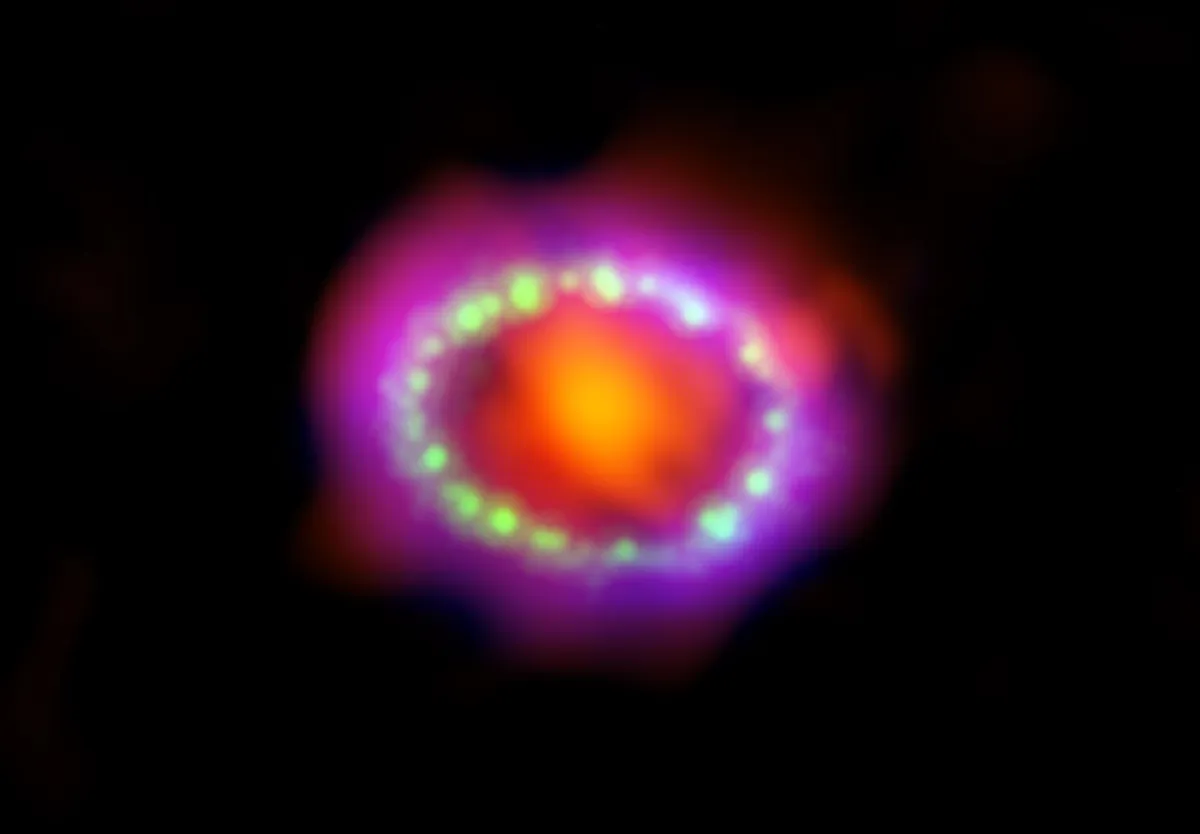Being part of a team that discovers something new is always thrilling. Especially if you provide answers to
a cosmic mystery that has persisted for almost 40 years.
My background is in infrared astronomy, observing cool objects throughout the Universe.
I planned some of the early James Webb Space Telescope observations before moving to Edinburgh to work with experts at the UK Astronomy Technology Centre, who were in charge of building JWST’s Mid-Infrared Instrument (MIRI).
I’ve been having an absolute blast since JWST launched.
See the James Webb Space Telescope image of SN 1987A

One of its observations which I planned was of supernova 1987A (SN 1987A), the remnants of a supernova that exploded in a nearby galaxy in 1987.
Even though it’s 168,000 lightyears away, its explosion was visible to the human eye.
The last time a supernova this bright occurred was 400 years ago, before telescopes were invented!
Due to its proximity, every great observatory has studied SN 1987A, and over the years it’s provided huge amounts of data on how stars explode and die.
Naturally it was one of the first things we wanted to look at with JWST, because one crucial mystery remained: what lies at the heart of SN 1987A?

SN 1987A and the neutron star mystery
The mass of a star when it forms more or less determines its fate at the end of its life.
A low-mass star like our Sun is expected to slowly lose its mass, exposing its core and creating a planetary nebula.
Meanwhile, a star greater than eight solar masses is expected to explode as a supernova, forming a black hole or a neutron star.
Considering its size, astronomers expected to find a neutron star at the centre of SN 1987A.
We looked and looked and, nearly 40 years later, no neutron star had been observed.
The longer this went on, the more we started to think perhaps our theories about stellar deaths were flawed.
Was our physics somehow wrong?

Solving the mystery
Spotting a neutron star directly in another galaxy is akin to finding a cosmic needle in a galactic haystack.
They’re very small, around 10km across, but incredibly dense – a teaspoonful is heavier than Mount Everest.
You wouldn’t normally go looking for a neutron star in the infrared as they’re incredibly hot.
Most are detected in X-ray, ultraviolet or optical light, though pulsars can be found at radio wavelengths.
But, in this case, infrared was just what we needed.
There’s a very thick dust shell surrounding it, so optical or ultraviolet light can’t escape the centre of SN 1987A, it’s only in the infrared where you can peer through the dust.
We can’t directly see the object at the centre of SN 1987A, but what we can see is the impact it’s having on its surrounding material.
With JWST, we’ve observed certain spectral lines that could only arise if there’s a lot of energy being pumped into the surrounding gas.

The only way to produce that amount of energy is a neutron star.
Now we also suspect that SN 1987A wasn’t just one star, it was two stars.
With JWST, we’re starting to observe its core in 3D and it looks a bit like a peanut.
It’s asymmetric, not just a sphere that’s exploded outwards as you would expect if there had been a single star.
The fact that our experiment design worked perfectly is absolutely wonderful. We’ve finally found the holy grail of SN 1987A, the neutron star in the centre.
And that’s quite nice. It’s reaffirming, the fact that we were right and we know how physics works.
This article appeared in the July 2024 issue of BBC Sky at Night Magazine

